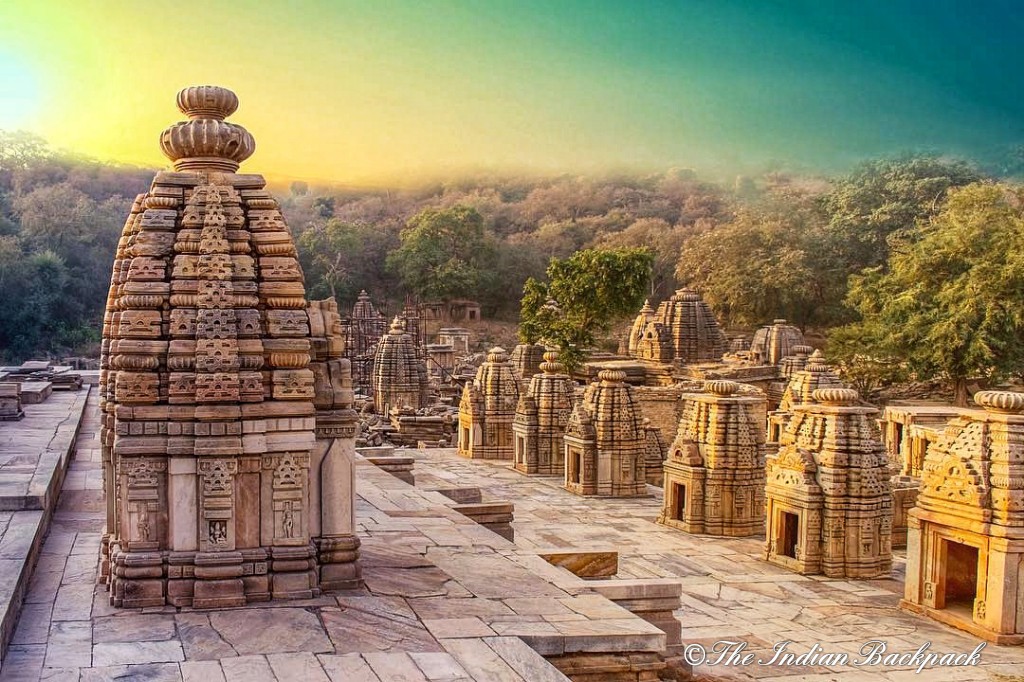
Jaisamand Lake is a comprehensive bounty that lures the beholder to measure the depth of nature. It is an acquaintance of water that recesses the amiable, placid intrusion into an unmatched experience of paradise. Jaisamand Lake is known as the second-largest artificial lake in Asia. Located at a distance of nearly 51 km from Udaipur. About the history of this artificial lake, it is said that there was a small puddle or lake, which was called Dhebar Lake. Further, it is said that Maharana Jai Singh’s childhood name was Dhebar and the name of this lake was named after him. Maharana Jai Singh later named this magnificent lake Jaisamand after his known name which means ‘Ocean of Victory’. The Jaisamand Lake Dam is 300 Meters long and is a part of the Heritage Monuments of India. This dam has a Shiva temple, the lake also boasts of six interesting cenotaphs carved from marble on its embankment.
Roothi Rani ka Mahal-

Maharana Jai Singh built many grand palaces along the banks of the lake. This also included the small palace for his queen, Kamladevi. Also popular as Hawa Mahal, this palace is also known as Roothi Rani Ka Mahal and is quite fascinating. Constructed in A.D. 1680-1698, it was gifted to Maharana Jai Singh’s youngest queen Kamladevi. Legends say, being dismayed with Jaisingh, she left her palace to lead a segregated life, hence, the name came to be known as Roothi Rani-ka-Mahal. Roothi Rani Ka Mahal is a heritage structure which is now being maintained by the archaeological department to attract more tourists. The place is developed as a trekking spot as well and is great for the same. During the reign of Maharana Jai Singh the lake was constructed to fulfill the great need for water for cultivation in Mewar’s southeastern corner, and it was named after him. The work of this dam was started during his regime but was completed in later years.

It consists of eleven islands some of which are inhabitant by the tribe of Bhil Minas. Two bigger islands are known as Babaka Magara and a smaller one is called Piari. Marble staircases lead into the water, and along the shoreline are several marble chhatris. When the lake was inaugurated on June 2, 1691. Maharana Jai Singh distributed the equivalent of his weight in gold to the people of the adjoining regions as per the chivalry of the medieval period. The northern end of the lake has a palace with a courtyard while its southern end has a pavilion of 12 pillars. The lake also boasts of six interesting cenotaphs carved from marble on its embankment. Rana Jai Singh’s palaces, Hawa Mahal, and Ruthi Rani ka Mahal are set in the foothills overlooking Jaisamand. The summer palaces of the Queens of Udaipur surround Jaisamand Lake on all sides. On the embankment, there are six beautiful chattaris built at intervals and a temple of Narmadeshwar Mahadev. In front of these chhatris, stands a beautifully carved elephant on a pedestal, with its trunk upwards.

Jaisamand Lake is the main water supply for the city of Udaipur. The gross basin area up to the Jaisamand dam site is 1787 square km. Droughts are a normal feature of the basin and extreme events have become more frequent in recent decades.These lead to excessive use of lakes and reservoirs. And in 1999, official statistics show the augmented use of the dead storage and the reserved water which were to be used only in cases of a dire emergency. These same estimates confirm that, in the next few years, even the dead storage will be completely exhausted. In the monsoon of 2006 excessive rains and subsequent overflow of small perennial waters in the catchment caused movement of advance size yearlings into the lake Jaisamand.

The surrounding area which is at its most lush in October, soon after the monsoon, is now a wildlife sanctuary which was built in 1957, sprawling over sixty-four square kilometers and is rich in fauna with counts of over 300 bird species. Attracted by the expanse of water of Jaisamand lake, a host of small birds, local and migratory, habitat the sanctuary. The four-horned antelope, chinkara, chital, wild boar, sambar deer, spotted deer, gazelle, and panther are also found here. The sanctuary has also enabled the endangered Indian wolf to breed. The forests used to be a favorite hunting ground for the former rulers of Mewar.

A drive from Udaipur to Jaisamand provides an enchanting view of tall trees on both sides of the window road. A tourist bungalow, a forest rest home, and a Baba island resort provide accommodation to the enthusiastic wildlife watchers. The tourists can even enjoy the beauty of the lake by motorboats. A thirty-minute boat ride allows one to see chug across the pristine waters of Jaisamand Lake. On the top of the two nearby hillocks are the two old palaces constructed by Maharana Jai Singh, which provide an excellent view of the lake.

Jaisamand Lake with all its trekking activities and the exciting motorboat rides has something for everyone which turns it into an interesting family picnic spot.

Till then- KEEP TRAVELLING. KEEP WANDERING.


